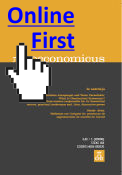The Relationship Between Economic Growth and Finance of the Social Security Sector: Evidence from EU Countries
DOI:
https://doi.org/10.2298/PAN210326005KKeywords:
Social security funds , GDP , Granger causalityAbstract
We explore whether the primary financial variables of the social security sector and changes in the GDP are complementary, thus allowing for better forecasts. Thus, it is crucial to create policies that promote fiscal sustainability and societal well-being. We analysed EU countries for the period 2003-2019. We found that the Granger burdens of causation were not equally distributed. Revenue redistribution plays a greater role than allocation. This is because, in countries that were members of the community before 2004, expenditures and revenues were characterised by bidirectional Granger causality. In turn, in countries that joined the community in 2004 and later, expenditure and balance were characterised by bidirectional Granger causality. Granger causality, demonstrated on the basis of GDP changes to expenditure, is of key importance here, and it is GDP changes that may result in changes in expenditure in EU countries, and not vice versa. This is particularly important for countries where the financial situation in this sector is more challenging.
JEL: E60, J18, C33.






